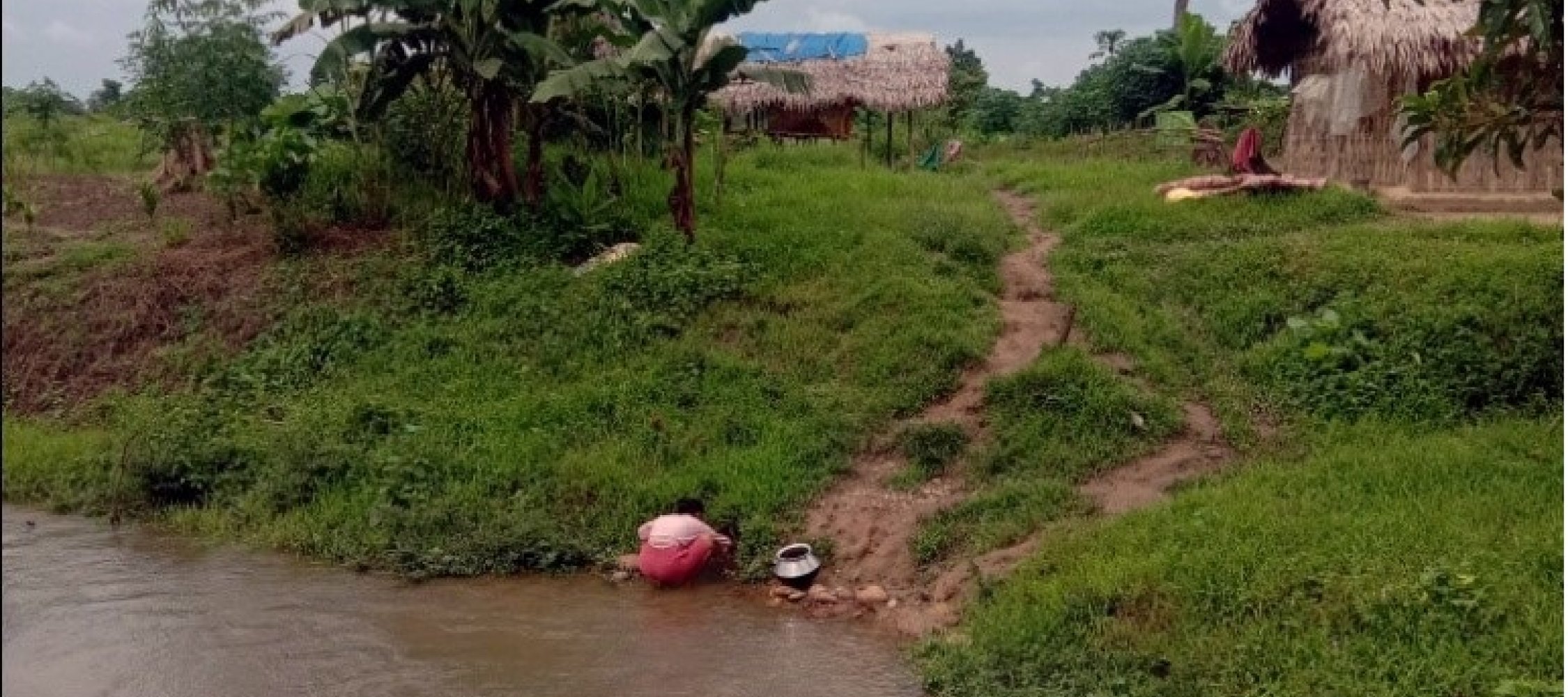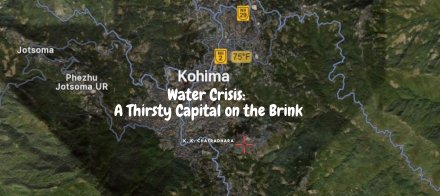 |
Sonali Janajati Kangkan Mising Gaon (SJKMG) is a model ethnic tribal village inhabited by the indigenous Mising tribe. The SJKMG comprises four major habitations namely, Kangkan-1, Kangkan-2, Karpumpuli, Ríkpum Mising Gaon. Around 4,000 inhabitants live in this cluster, which is located at a distance of about 2 km east of Jagun Bazaar, a small market under the Margherita tehsil of the Tinsukia district in upper Assam.
The Missings are the second largest tribal group in Assam. A large number of the Mising population is found along the flood plains of the Brahmaputra valley. They are truly a riverine community, being exposed to periodic natural calamities and displacement. Between the years of 1989 and 2000, thousands of Mising families were displaced by devastating floods from the greater Sissi Tongani area of Silapathar in the Dhemaji district on the north bank of upper Assam.
They lost all of their paddy, other crops and livestock due to the floods, an annual feature, while their farmlands became totally unsuitable for cultivation due to sand casting and erosion of the river banks. As a result, the agrarian Mising families, which were once rich with abundant food grains in their granaries, suddenly became an environmental destitute taking shelter in relief camps.
With their home and hearth destroyed, many families migrated to different areas in search of fertile lands and better life. A sizeable number of the Mising community moved to the Tinsukia district across the Brahmaputra. Initially, a few families ventured into the dense forest land adjacent to the Tokopani reserve forest of greater Jagun area and started clearing the forest lands to build houses and start cultivation. The new Mising settlement areas at Jagun grew along the historic Stilwell Road, which borders the Changlang district of Arunachal Pradesh.
The word, Jagun, comes from the Tangsa community, an ethnic group of the Naga tribe. However, originally, Jagun was known as ‘Cha-Khung’, meaning, rising tiger from the river bank. It’s a multi-ethnic area where numerous ethnic communities, tribes and non-tribes reside with peace and harmony.
The area at Jagun where the Misings migrated and began to settle down is a water-stress region; securing drinking water is a daily struggle. Many families tried to install hand pumps, but drilling was not possible because of stone layers just 4-5 feet beneath the topsoil. They reported that the new settlers had been facing water scarcity in the foothills of the Patkai mountain ranges.
Unfortunately, the neighbouring villages also did not allow the new settlers draw water from their wells. This left the new settlers completely at the mercy of nature, as they scouted for new water sources like small streams or water holes, which are usually also used by wild elephants.
Amidst such cruelty and continuous eviction drives against these helpless victims of natural calamities, a few social organisations like Nari Mukti Sangram Samiti came to their rescue, and even filed a PIL in the Gauhati High Court to highlight the violation of human rights and end the cruelty against the flood victims.
The Gauhati High Court heard their petition and passed a stay order against any further eviction till the case was disposed off. Unfortunately, despite the stay order against eviction, a few corrupt officials continued to harass the new settlers and threatened them with evictions. “Some us felt enough is enough,” said Monuj Pegu, one of those who thwarted an attempt of eviction by a group of land mafia and forest personnel. That was the turning point in their lives, and a new beginning, leaving behind years of tormenting past that recorded exactly 72 times of eviction!
Thus began a new chapter in the life of new settlers, as they focused on creating better amenities, especially securing safe drinking water for the village. Several families started to build permanent houses in the village. Gradually, other economic activities – farming, livestock and poultry – followed. Besides, they started asserting other rights, such as demanding drinking water, improving the water level of the wells,availability of electricity, school and health centre. They also asked for ration cards and voters’ identity cards.
In 2006, the new settlers started cultivating permanent and cash crops like tea and betel nut. However, the rapid expansion of tea gardens and commercial plantations gave rise to new problems. Rampant use of chemical fertilisers, insecticides, and pesticides in tea gardens has become a serious environmental concern as these toxic materials find their way to the water bodies. The chemical containers and spraying machines in tea gardens are washed into the stream and wells, polluting the waters and making them unfit for human consumption. Not only that, the contamination of water posed a threat also to wildlife and other aquatic fauna.
“Apart from the pollution issue, the villagers felt that plantation crops affected the groundwater level, which meant safe drinking water is the main challenge now,” saidUreswar Taye, a local school teacher and resident of the village. On the other hand, neither the government nor the tea garden authorities are making enough efforts to provide for an alternative source of water supply to the villagers. Since women are generally responsible for water collection to meet household needs, they are required to walk long distances to fetch water from the wells from the depth of 25 feet to 30 feet, thereby increasing the drudgery. The situation gets acute during the months of November to January when the water level of the wells drops further and waters of Tokopani stream reduces to a mere trickle.
The only silver lining was that since 2008, when the village got electricity, those who could afford used electric motors to pump up water from the deep wells. But again there was the problem of frequent load shedding. So the water insecurity persists in the village. Villagers highlighted many other factors that are deepening the water crisis in this cluster of villages. They also talked about the impact of ongoing oil extraction and coal mining in the nearby areas. They said they often felt tremors due to these extractive activities, which were not only degrading and polluting the environment, but also affecting the groundwater. Large scale destruction of forest is further contributing to the water shortage in the area. All this activities eventually are impacting on microclimate conditions – water loss, drought, rise of temperature, etc. The question is: When will the humans learn to rein in their unbridled greed and avoid their self-destruction?


